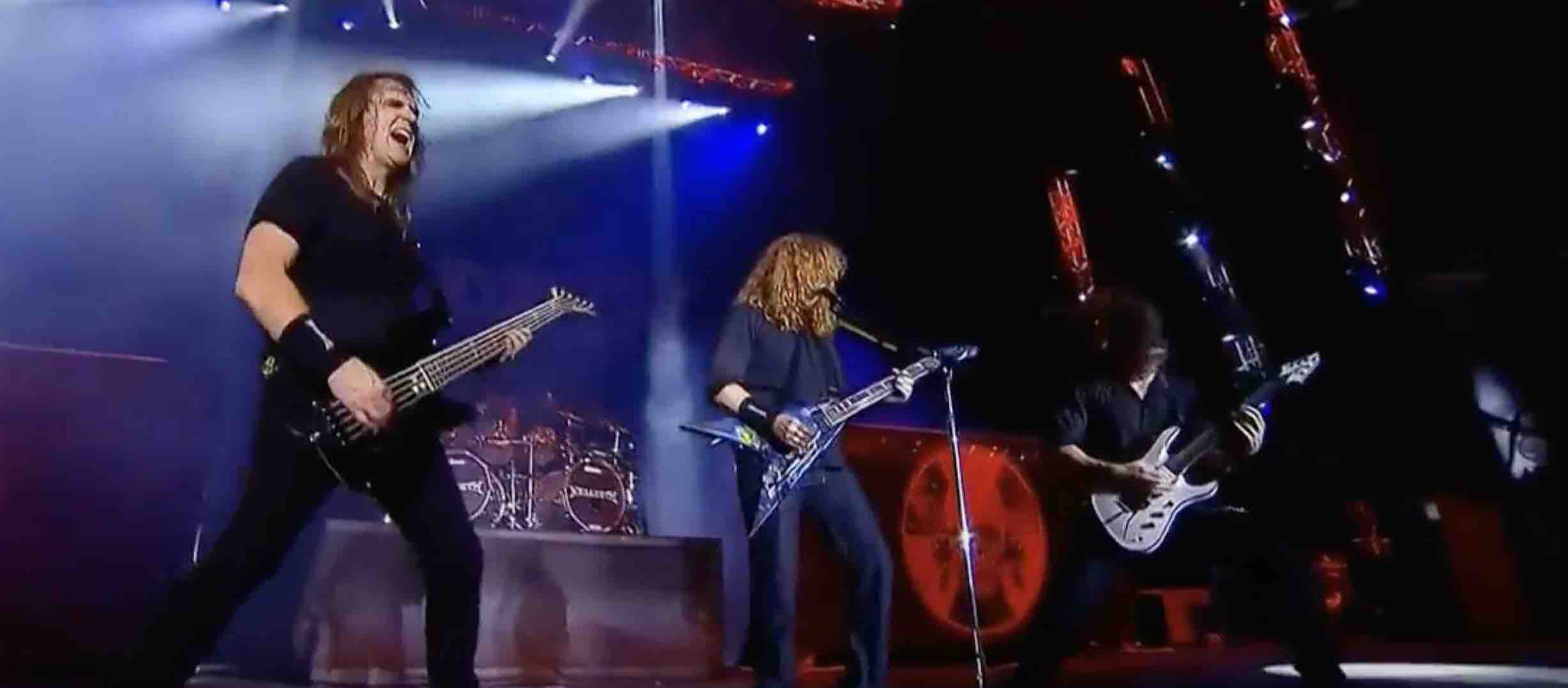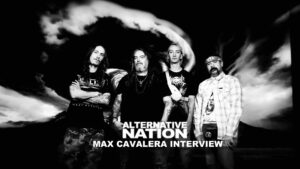Megadeth: News, History & Updates
Megadeth Biography
By DAVID ELLEFSON, exclusively for Alternative Nation
Thrash Metal’s Early Years
David Ellefson: Well, it wasn’t called thrash. We didn’t really have a name for it. We were just sort of playing what we knew from our record collections. We liked Judas Priest and Black Sabbath. We also liked the Sex Pistols and the Dead Kennedys and punk rock. My memories of it are contrasted with living in Los Angeles, where we started Megadeth. Launching Megadeth up in the Bay Area, which was an entirely different animal, completely – driven largely by the band Exodus, and then right after that, Metallica. So, it was this underground, fun, energetic music that was bucking everything around it – from hair metal to sort of dinosaur metal to whatever else you may have been around it. It was definitely the new way of the new path.
Peace Sells…But Who’s Buying?
David Ellefson: The first album is getting to know each other. And Killing Is My Business was the first album any of us had made – me, Dave [Mustaine], Gar [Samuelson], or Chris [Poland]. We’d made demos, but we’d never made a record for a record company before. Which is an entirely different process and expectation. So, by the time we did it a second time, which was Peace Sells…But Who’s Buying?, we had, most importantly, spent some time on the road together. And just as importantly, spent a lot of time in our rehearsal studio, just writing songs.
And I think once a band has been on stage, it has a different…you think about your songs and how they respond with the audience differently. And I think we just kind of organically knew that everything that was coming out of us that was becoming the Peace Sells album had a real magic to it. It was special. It didn’t sound like anybody else around us. We were really carving our own path. And clearly, it mattered, because it got the attention of Capitol Records and that basically made our lane on the highway for all the years to follow.
Rust in Peace
David Ellefson: I think great rock n’ roll does need to be hanging on a cliff. Like a roller coaster, right as you crest that first line, and then when it goes down the hill and around all the loops, where you feel like you could get seriously hurt, if not die. And I think that’s what great rock n’ roll used to represent. It’s not that anymore because of technology, attention spans, competition for people’s time and their focus. But I’d say Megadeth got in under the wire when rock n’ roll still mattered in people’s lives. I don’t know that it does today. I think for people my age, and maybe a little older, a little younger, we are enjoying the last vestiges of what rock n’ roll really is.
And that doesn’t mean there’s not some great artists coming up, making some cool music and doing some cool stuff. But that “breakneck, take it to the edge, this could all fall apart and we could all die,” that was always the speed of which Megadeth traveled – starting with the earliest days debuting the band, Killing Is My Business, Peace Sells, right up through Rust in Peace. And I think that’s why people go back to Peace Sells and Rust in Peace. That’s why they go back to those two records. Not only did we have the capability to harness it on both of those albums, to get it harnessed, recorded and put out…it was the lifestyle around it, and drugs were certainly a part of it. Fast drugs, fast living, and all the characters – the men and the women, Hollywood, you know what I mean? Just all that was around it.
And really for us, we were not a Hollywood band. We were a Los Angeles band. And there’s a lot of dark, seedy underbelly to Los Angeles that only a few other bands understood. I feel like Guns N’ Roses understood it, obviously. Probably Mötley Crüe understood it. There’s some bands on the scene that understood it. But I think from a lifestyle point of view, we did not live on the Sunset Strip. We lived downtown LA and Vernon, you know what I mean? Like, we did not live in sexy, cool, hip spots. We lived where basically, we could avoid being homeless.
And that’s what made those records what they are, is you hear desperation. You hear, “We’ve got absolutely nothing to lose, and put it all on the line.” And that, to me, I think, is what both of those records really represent.
Countdown to Extinction
David Ellefson: [Countdown to Extinction] was 100% a focused mission. Now at this point, we’re heading into probably year two of sobriety in the band, right? Because Dave and I basically were told by management, “Either get cleaner or it’s over.” So, we did. By this point we had just come off Clash at the Titans [a North American tour in 1991 which featured Megadeth, Slayer, Anthrax, and Alice in Chains], had this huge campaign with Rust in Peace the album, the tours, properly managed. Just, all the parts coming together. And by now we had a Formula One race car ready to hit the tracks for round two, which would be Countdown to Extinction.
David Ellefson exclusive interview conducted by Greg Prato for Alternative Nation.











